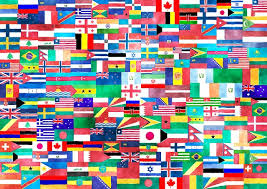 We periodically ask the Scholarly Kitchen “Chefs” to answer a question we think scholarly publishers may be pondering themselves. We try to keep the question broad enough to allow for diverse interpretation. Additionally, the Chefs don’t see each other’s answers (David Crotty and I are the only ones that see them all before they’re published).
We periodically ask the Scholarly Kitchen “Chefs” to answer a question we think scholarly publishers may be pondering themselves. We try to keep the question broad enough to allow for diverse interpretation. Additionally, the Chefs don’t see each other’s answers (David Crotty and I are the only ones that see them all before they’re published).
We’re working to make this a monthly practice, but we’re changing it up a bit by asking you to join us in answering the question in the comments section below. You may choose to pick up on something a Chef said or bring your own perspective to the issue. All answers are welcome. We all gain when we can have a productive and more far-reaching dialogue.
One last thing, we’d also like your input on questions you want our community to discuss here on the Kitchen. What are your burning questions or curiosities? Please send them to us.
Our question for this month: What is “international” in publishing strategy today?
Joe Esposito: By “international” one usually means a sales and marketing strategy. There is a domestic market, but there is a bigger one beyond the borders. But this is an oversimplification. A company that works internationally also has the capability to invest more in its platforms because the larger (international) market provides greater opportunity to spread costs. Internationalization typically leads to homogenization, as we see in the STM market today, where researchers around the world all seek to publish in English–and generally in journals based in Western Europe and the United States. I am reminded, however, of a former colleague of mine, an Italian who happened to be quadrilingual. He told me when he used French, when he used German, and when he used his native Italian. And then he smiled: “But we don’t make love in English.”
The world is getting flatter but it is not flat. An international strategy today has to encompass the diversity of peoples, governments, and conventions, even as it seeks the scale–and profits–of a global enterprise.
Kent Anderson: “Foreign” was actually a more useful and circumscribed term in some ways, but it’s now outdated. What threw it out of date was not merely political correctness, but the Internet. “Foreign rights” and similar phrases made sense when the distribution of physical goods across clear national borders was contemplated. Now, seemingly instantaneous transmission around the globe has made borders more two-dimensional and abstract.
In some parts of the business, “international” matters a great deal, but in more specific terms. Translations, VAT and other tax laws, licensing and copyright laws, and regional editions all require more specific discussions and country identification. For those of us who still ship physical books or journals, international prices still matter. But with online, global pricing is more common, as there aren’t additional postal costs to absorb.
In some financial reporting, “international” is a catch-all category of ancillary publishing activities outside the primary “national” market. It’s handy as a roll-up of a collection of typically small initiatives that are more mission-oriented.
For membership organizations, “international” often means new kinds of membership categories. There was a time when international expansion was thought to be the path to immense influence and wealth for these organizations, but the pesky realities of multi-national efforts, intrinsic competition in most countries, and overwhelming expense quickly made these efforts more about affinity and collaboration.
International editorial boards have emerged successfully across the sciences, which is a very good thing. More and more editors are aware of the regional and cultural differences that exist among practitioners ostensibly in the same field – some of these differences are so dramatic that one wonders sometimes if they truly are in the same field. Information diffusion has become bilateral, which is an improvement. Email continues to serve these efforts most effectively.
In some situations, “international” is a catch-all for free-floating anxieties or non-specific and often grand hopes. The truth is that there are dozens of viable markets, but each needs specific attention. The amount of work needed to fulfill any “international” dreams, and the rather modest returns that usually occur, can disappoint the dreamers, but that’s the reality. When I was running the international business operations for NEJM, we used to refer to the dichotomy inherent in “international” as “the world is flat for information transmission but mountainous when it comes to conducting business.” That is, sending information around the world is easy and requires little attention to distinctions at the national or regional level. But getting business done is all about local markets, local laws, local partners, and local contacts.
“International” represents the start of a conversation. But pretty soon after using the word, you have to start getting to what you’re really talking about. It’s a whole different world.
Judy Luther: What comes to mind is the classic distinction in business school between international, multinational and global. International meant sales outside of the country; multinational organizations are headquartered in one country with operations in several countries; and global meant that products are designed considering the preferences and culture of those in other countries.
Through that lens – an International strategy for publishing in the last 20 years meant worldwide sales were made through consortia in different countries and regions. During that time industry consolidation resulted in the largest publishers having offices around the world. In the last decade, the growth of submissions from multiple countries has altered the editorial process. Production has been outsourced to Asia. So indeed – we could say everything, however…..
I think the next challenge would be the full impact of ‘global’. Today scholarly publishing is predominantly in English. To be global wouldn’t we need to support societies in other countries to achieve their objectives and to publish new titles originating in those countries in their language? As other countries invest in research and offer innovative ways to develop and deliver content I expect that we will continue to see expanded access to a broader audience.
An example is Wikipedia with the majority of articles in English and a growing number translated into other languages. A few editors are creating content in their own language about their own country. At what point are those articles available in English? In the future the global version would be written in the local language of the author and appear in the local language of the reader. While the technology and the costs today may not be practical, at some point it won’t be an obstacle.
Alice Meadows: The brief answer to the question of what is ‘international’ in publishing strategy today is everything! It is hard to think of a single aspect of publishing strategy that doesn’t – or shouldn’t be – at a minimum, at least considered from a global perspective. We know that research is increasingly global and this is shown through the continued growth in international authorship (see, for example, http://www.nsf.gov/statistics/seind12/pdf/overview.pdf page 11). Not surprisingly, so is pretty much every stage of the publication process – from peer review, through production and distribution (print and/or online) to sales and marketing. Our organizations themselves are increasingly global!
Wiley has offices in at least 15 countries that I can think of off the top of my head. The societies we publish for are based in nearly 50 countries – and their members come from pretty much every single country in the world. So any publishing strategy that fails to take into account the global nature of scholarly communications is surely doomed to failure.
Having said that, there are of course still regional and national differences – legal, cultural, social, economic, and more – which it is crucial to acknowledge and, where necessary, tailor your strategy to. If living in the States for 14 years has taught me anything, it’s that it takes a long time to understand how to do business in another country – and no sooner have you figured it out, than you realize that you no longer remember how things work in your previous home!
Jill O’Neill: Let me step just to one side of “publishing strategy” per se. This past week, I was scanning my Tweet stream and noted a map of Iraq embedded in something posted by a European colleague. The graphic was clear but the caption accompanying the graphic was in another language, possibly Dutch. Another item was a photo of a convoy moving into the Ukraine — again, specifics noted in another language. I saw tweets from respected British news outlets — the Financial Times and the BBC. When it came to the #FF (Follow Friday) tweet sent out by Portuguese info pro Jose Furtado with his 13,000 followers, there was a “merci” from a French publishing professional for the kind recognition. International isn’t something I think about on Twitter; it is simply a given.
The same is true of scholarly publishing as every discipline transcends geographical boundaries. Does it make sense then to still be naming journals The International Journal of __________ ? It must be considered as questionable branding, when a Google search on that phrase brings back hundreds of legitimate journal titles. If those words have lost their marketing impact, do publishers really need to telegraph a commitment to crossing geographical boundaries for the purpose of attracting either manuscripts or subscriptions? Even if more seasoned publishing experts think so, I’m fairly confident that the rising population of scholars (that is, those Millennials who have completed their Ph.Ds and embarked on tenure track careers) don’t. Factor it into your editorial scope or to your sales strategy? Sure. But, really, have you much of an option?
Michael Clarke: A decade ago “international” largely meant either selling site licenses outside of one’s home nation or recruiting papers from authors located around the world or, most likely, both. Today, both of these are a given. Publishers have spent the last decade selling site licenses to institutions around the world and most established journals publish papers from a diverse body of international constituents – in many cases more papers are published from authors based outside of a journal’s home territory than from within it.
“International” today means more than selling site licenses or processing papers, however – it means cultivating a truly global community of stakeholders. By “stakeholders” I mean editors, editorial board members, reviewers, readers, and authors. It is one thing to sell site licenses, or receive papers from authors, in China, India, and Brazil (to use the example of three countries that have seen the most growth, in terms of both papers and readership, over the last decade for many journals). It is quite another to have cultivated a community of reviewers, to have established substantial representation on a journal’s editorial board, or to have appointed an editor in chief from these same countries. Being international today is not about where a journal is accessible but rather where communities of practice and knowledge are invested.
Discussion
6 Thoughts on "Ask The Chefs: "What is ‘International’ in Publishing Strategy Today?""
I beg to differ with Alice that “everything” in publishing today is international. One very important category of publishing for university presses, especially those affiliated with state universities, is what we all call “regional” publishing, and this most definitely is not “international” in any way–in fact, quite the opposite. But of course this applies much more to book publishing than journal publishing, though there are journals like the one we published at Penn State titled Pennsylvania History whose content is regionally focused and probably has almost no international sales.
Regarding for-profit open-access journals, especially predatory journals and publishers, “International” means more revenue.
Many academic and research institutions award their researchers more academic credit for publishing in international journals than they do for publishing in regional and national journals. Therefore, researchers — seeking the best possible return on their article processing charges — generally prefer to submit their work to international scholarly journals.
To accommodate this need, many OA publishers have emerged that claim, correctly or not, to be international in scope. The names of these publishing houses and their journal titles frequently use terms such as international, global, world, universal, and the like, in them.
This reflects the trend of open-access publishers retooling their operations to prioritize the needs of authors, the source of their revenue, over those of readers.
Sandy has a good point in that it should be related to the intended market for the book or product. Regional, National and International are all useful terms for thinking about the likely audiences for a given title. Of course, International really means International (English Language). Textbooks are generally more National than International, and Monographs should be more International than National as a rule.
Digital distribution makes some of the supply chain issues less significant but the cost of marketing books that are have no audience in particular locations is still something that will be argued over.
The cost of Internationalising (sorry) your publishing strategy is something that should be considered as it seems to me that the barriers to entry to non-local markets are now lower.
Non-US academic publishers tend to have a deeper appreciation of the idea of International in that the US market is International to them and so very significant in their thinking.
I’m surprised nobody mentioned the importance of standards in this context, so I will. 😉 Persistent identifiers like DOI and ORCID are essential tools in the context of global publishing, not only disambiguating but in a sense transcending language-based difficulties. Metadata standards like ONIX, metadata-driven services like CrossRef, and technology standards like EPUB, XML, Unicode, and the OWP (the Open Web Platform, HTML5 etc.) are inherently global, and essential global enablers. And global standards like Thema (the recently developed global subject classification scheme) are increasingly being developed to transcend or at least complement the previous generation of language- or region-based schemes like BISAC and BIC. These are “languages” that all countries around the globe “speak.”



